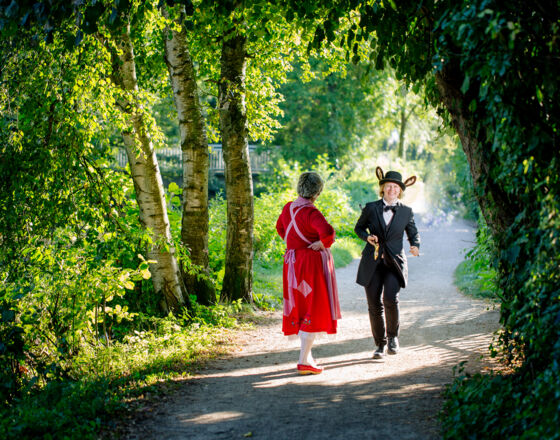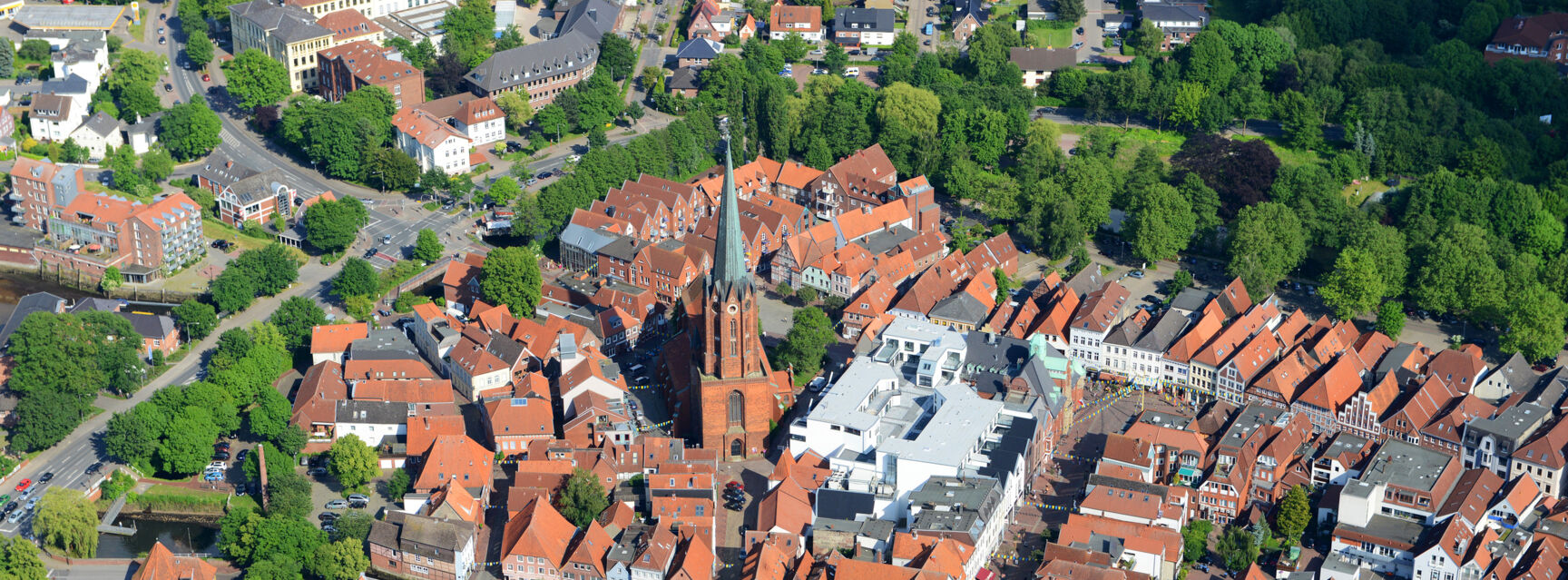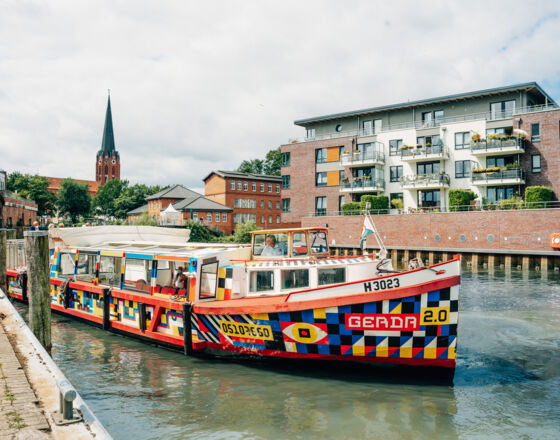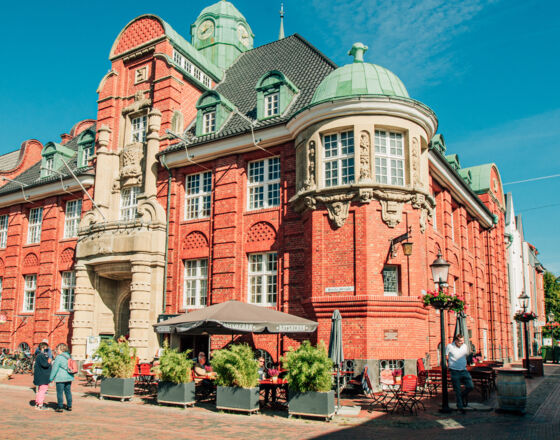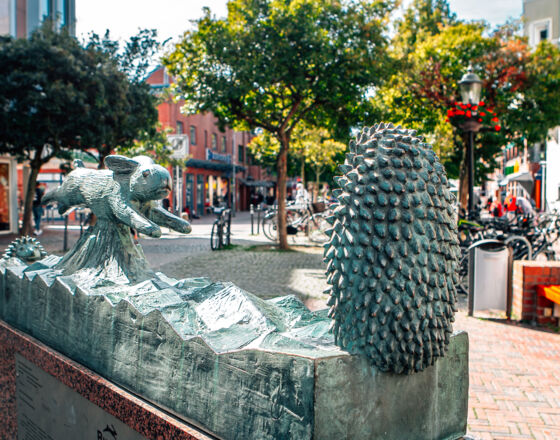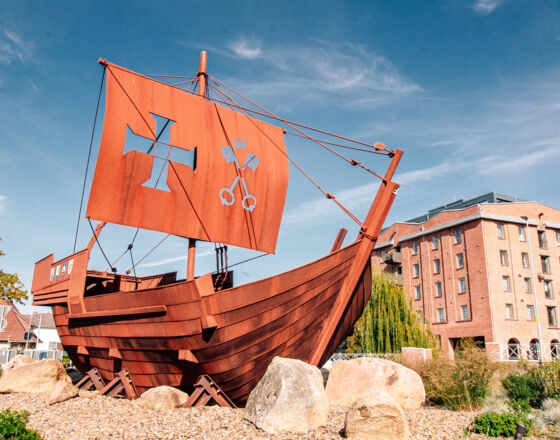Highlights
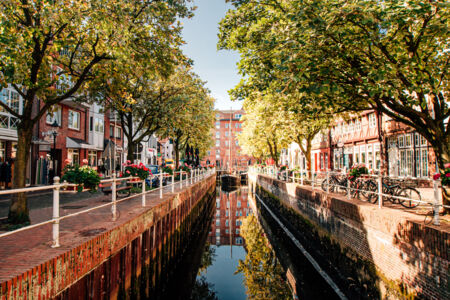
Flethanlage
The Fleth was based on the Dutch model and already laid out as a harbour basin within the town when it was established at the end of the 13th century. The canal-like Flethanlage is, next to the St.-Petri-Kirche, Buxtehude’s most important architectural monument. Lighters delivering goods or grain for unloading and milling were frequent visitors here until 1962.
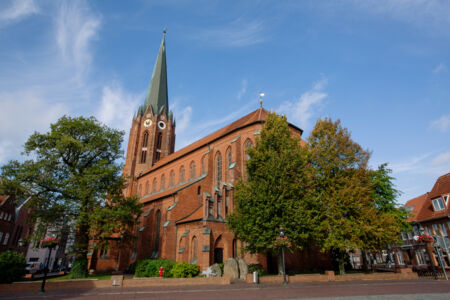
St.-Petri Kirche
The outstanding brick-built Gothic church was first mentioned in 1296. The exterior was based on the original period during its restoration at the end of the 19th century. This three-nave basilica, however, has preserved its original interior layout. Due to the clerestory – the row of windows in the upper part of the nave – the church appears remarkably bright. The highlights inside include the Halepaghen Altar by Wilm Dedeke (circa 1500-1520), the choir stalls (circa 1400), a carved crucifix (circa 1470) and the baroque altar from 1710.
Read more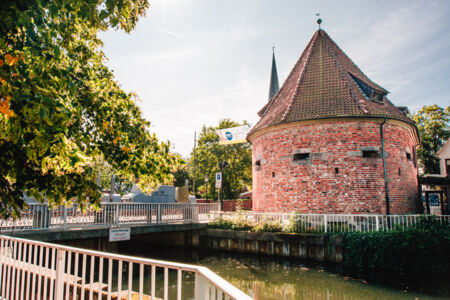
Marschtorzwinger
Until 1851, a gate with Gothic elements existed alongside the Marschtorzwinger, which is still standing. Its pointed arch led into the town. It was formerly an important part of the town’s fortifications, which consisted of the town wall, the moat (the Viver), three town gates and five such round towers with two rows of embrasures. The two-storey brick building is used today for exhibitions and cultural events.
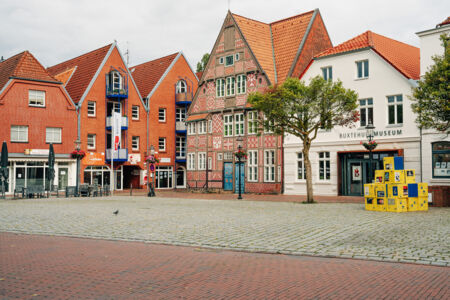
Buxtehude Museum für Regionalgeschichte und Kunst
The Buxtehude Museum of Regional History and Art is a multi-articulated complex that illustrates several stages of the building's history. In 1913, a building reflecting regional architecture was erected on St. Petri Square in place of an old farmhouse: Infill with brick ornaments, as also found in the Altes Land (Old Country), a typical Klöndoor, the Utlucht, a bridal door. After several extensions, the extensive collection on the history of the town, craftsmanship, domestic culture and the spectacular finds from the Immenbeck burial ground are presented in a contemporary way.
Read more
City tour "Butter bei die Fische"
"Hat he denn ok Butter bi de Fische?" was a well-known question in the days of the Hanseatic League. The tour provides insights into the Hanseatic history of the city as well as the everyday life of the people at that time. So you can find out which fabrics and garments were in vogue at that time. During the two-hour tour, culinary samples will be presented at selected locations. At the end, the participants can look forward to a Hanseatic meal (pan-fried fish with fried potatoes in Dijon sauce) in a restaurant.
Read moreContact
Servicecenter Kultur & Tourismus
Breite Straße 2
21614 Buxtehude / Germany
Phone +49 4161 501 2345
stadtinfo@stadt.buxtehude.de
Travel options
by bus and train: Regional Express RE 5, S-Bahn (S3) and bus lines in the area of the Hamburg Transport Association (HVV), EVB private train connection to Bremerhaven
by car: B 73, B 3 and A 26 (under construction); Connections to the A1 and A7 can be reached in approx. 15 minutes by car
Gallery



